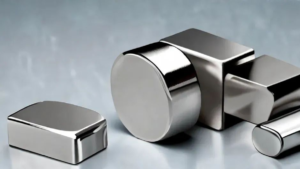

We are surrounded by magnets. Magnets are all around us, and most people do not even realize it. Sure, you may have some on your fridge that come to mind, but most average households in the US have hundreds of magnets in them. These magnets are tucked away in some of our most used items in our home, and we never even knew it. And to think that magnets are a several thousand year old “technology” that really has not replacement. It will never go obsolete. Sure there are alternatives, but generally there is no substitute for the performance of a magnet.

Let’s start in the kitchen. More than likely, there are a mixture of both flexible printed magnets and some hard magnets on your refrigerator holding up your kids’ drawings or To Do lists. But, how about inside your refrigerator? The seal around your fridge door is a magnetic seal to help keep the door closed and your food cold. Let’s move on to your cabinets, they may very well have some magnetic latches to make sure that they stay closed. Today many people hang up large decorative channel magnets that can hold their knives, so they don’t accidentally get cut while reaching for them in a drawer. There are also spice containers with magnetic circles on their bottoms, so they can stick to the sides of the fridge for easy access. If you have a garbage disposal, microwave, blender, mixer or can opener, then you also have magnets. Magnets help drive the electric motors inside these small appliances.
Moving on to your bathroom, you may likely have a shower curtain liner that has ceramic magnets in it that help it stick to your tub to make sure the water stays in. If you use a blow dryer, the motor in that may very well have a magnet in it. Some scales have magnets in them to help the needle on the scale move down quickly when you step off.
Let’s look at your office/home gym. If you have a computer in your office, then you have magnets in there as well. Most computer hard drives contain several permanent magnets, unless they are a solid-state drive. Laptops have magnets in them that trigger reed switches so that they can sense when the cover has been opened. If you use speakers to listen to music, earphones or even your smartphone, there are magnets in them that help to emit the sound, as well as the speakers in your television sets. Do you have any exercise equipment in your office? Odds are if you do, then you can add on more magnets. Magnets in exercise equipment pass sensors in the machines to count revolutions and let you know just how many miles you got in (or didn’t) during your workout. Your vacuum cleaner motor also contains super strong neodymium magnets that help to create the powerful suction you look for in a vacuum while keeping it lightweight.
Glancing around your bedroom, you may very well find magnets in some of your clothing or accessories. Magnets are being used more often as closures for pockets or elsewhere in clothing and as handbag closures. You may have a magnetic bookmark holding your place in the latest novel on your nightstand. Many makers of jewelry are now making bracelets and necklaces with magnetic clasps, so you no longer must struggle getting them on by yourself.
Magnets play a large part in our modern world, without most of us even knowing. These very small, powerful magnets have a very large impact on our daily life.

Magnetic sheeting is a flexible material that can be magnetized on one side and often has an adhesive or printable surface on the other. It

Magnets come in various shapes and sizes, each designed for specific uses. Understanding the different shapes of magnets, their properties, and their applications can help

Magnets are a fascinating part of our everyday lives, from the magnets on our fridge doors to the powerful magnets used in advanced technology. There
Our magnet experts will help you get exactly what you need – custom or stock – in record time with great quality at a very competitive price.
Ⓒ 2024 - All Rights Are Reserved